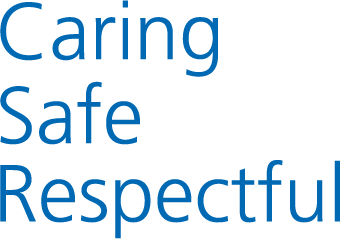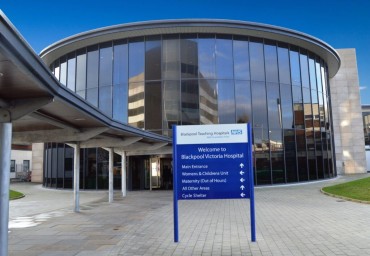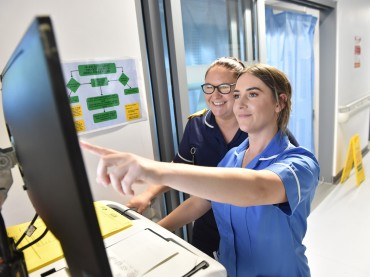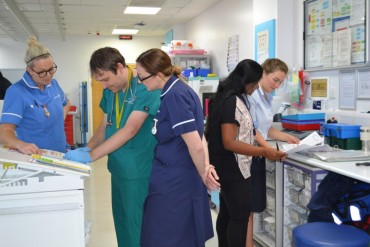What is a squint?
Six muscles control the movement of the eye. The presence of a squint means the two eyes are not aligned properly. This may be due to an imbalance in the way the muscles work (often in childhood) or may be due to a weakness occurring in one or more of the ocular (eye) muscles in later life.
The orthoptists will have measured the degree of misalignment i.e. measured the size of the squint, and completed tests to see if double-vision is likely after surgery.
Glasses may have an effect on the size of the squint but surgery is the only way of permanently straightening the eye.
In most cases this will be largely for ‘re-alignment’ reasons, or to improve symptoms such as double - vision.
Generally, it is the squinting eye that is operated on but sometimes it may be necessary to operate on the other eye to give better results by ‘balancing’ the eyes. This will have been discussed with you in the Outpatient Department.
Such surgery can be done at any time / age, and no harm will come to the eyes in not having an operation.
The operation will be under general anaesthetic, usually as a day case patient. Please bring any glasses that you generally wear, on the day of the operation. The surgery does not involve taking the eye out of the eye socket! Small cuts are made through the conjunctiva (the thin transparent skin covering the white part of the eye) and the muscles are then adjusted (either tightened or slackened) to straighten the eye. Fine stitches are then inserted. These are dissolvable and will not need removing. No cuts are made in the eyelids. Drops or ointment are given for a few weeks after the operation.
The operated eye will appear red or bloodshot following the surgery but will gradually settle to leave only a faint grey mark on the white of the eye. However, if there has been previous surgery to the same eye, it will take longer to settle and may leave some scarring which is more noticeable.
Possible complications due to the anaesthetic or surgery itself are rare. Sight threatening complications can occur (in less than 1 in 50,000 cases).
The most common complication is a reaction to the drops or stitches, both of which can easily be treated. Some double-vision is not uncommon after the operation and usually settles after a few days, but can very occasionally persist.
The eye is not a machine and sometimes the surgery can have more or less effect than predicted. This may mean that further surgery may be required in the future.
The operation will not improve your vision or alter the need for glasses.
The day after your operation you may start putting in the eye drops/ointment. The drops will consist of an antibiotic and an anti-inflammatory. An eye shield may be advised whilst sleeping, to protect the eye at night.
The drops need to be instilled regularly as advised in the Outpatient Clinic.
Should you require a further supply of eye drops/ ointment, you will be able to obtain them on prescription from your own GP.
You will be given advice and information before you are discharged from the hospital.
An appointment at the Outpatient Department will be given to you for the Orthoptist and the Doctor.
We hope you find this information sufficient to help you decide whether to go ahead with the surgery.
In some situations (where there is significant risk of double vision, unpredictability due to previous surgery, thyroid patients, etc.) there may be an advantage using ‘adjustable sutures’.
In this situation the surgery is done as normal under general anaesthetic but the sutures (stitches) are left untied. A few hours later, following recovery from the anaesthetic, the result of the surgery can be assessed and if satisfactory the suture tied. If not satisfactory the sutures can be adjusted to achieve a better alignment.
This is done with the patient awake, in the operating theatre and following adjustment the patient allowed home. If it is felt adjustable sutures would be appropriate for you this will have been discussed with you when you were seen in clinic prior to surgery.
Smoking:
The Trust operates a no smoking policy including e-cigarettes and your co-operation with this is appreciated.
Health and Safety:
Our patients have poor vision. Please consider their safety by co-operating with the following activities :-
• Try not to obstruct corridors
• To reduce the risk of injury to you and other. patients, please avoid assisting others.
Where is the Ophthalmic Day surgery unit
If you are registered disabled and have a ‘blue badge’ the nearest car park is Woodlands which can be accessed from East Park Drive near the Gastroenterology department.
From the car park, you can walk directly into the Unit.
If you are not registered disabled / do not have a ‘blue badge’:
• Please park in the multi storey care park.
• Enter the hospital using the Main Entrance where you will find the retail stores.
• Turn right up the stairs, escalator or lift. Go straight on down the main corridor.
• The Ophthalmic Day Unit can be found approximately 200 metres down this corridor.
Please use the notes pages overleaf to write down any further questions to ask the doctor or the nurse when you come into hospital for your next appointment.
Please do not worry about asking questions, our staff will be happy to answer them.
The Outpatient department reception can be accessed from Whinpark Avenue.
Author Conrad Beacham
Reference No PL/0717 (V3)
Review Date 01/01/2028



